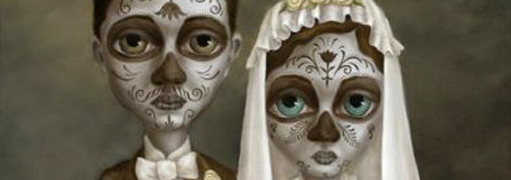Momento Mori
Runs Friday, July 16, through Tuesday, Aug. 31 Reception: Saturday, July 24, 6 to 8 p.m. POP Gallery133 West Water, Santa Fe(505) 820-0788, popsantafe.comAfterlife Remixed: Two Albuquerque Artists Take An Unconventional Approach To Visions Of Death
Two Albuquerque Artists Take An Unconventional Approach To Visions Of Death


“Visus (Vision),” Daniel Martin Diaz

“Until Death,” Brandon Maldonado









